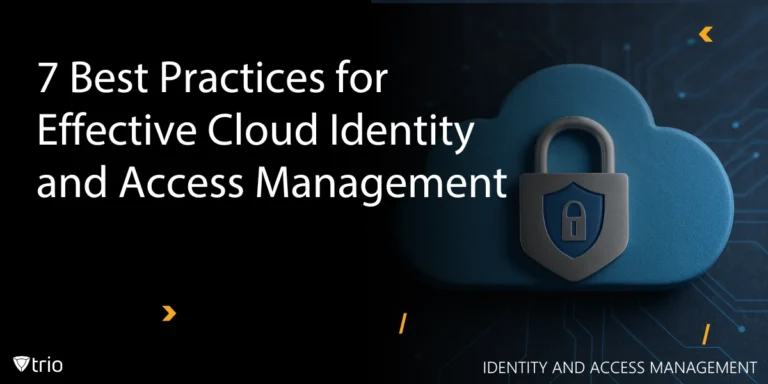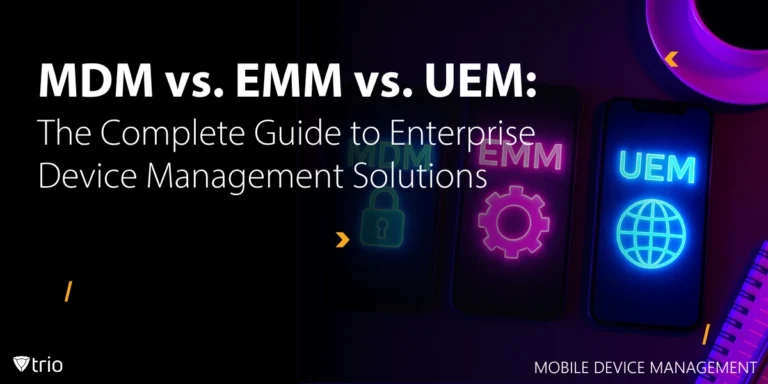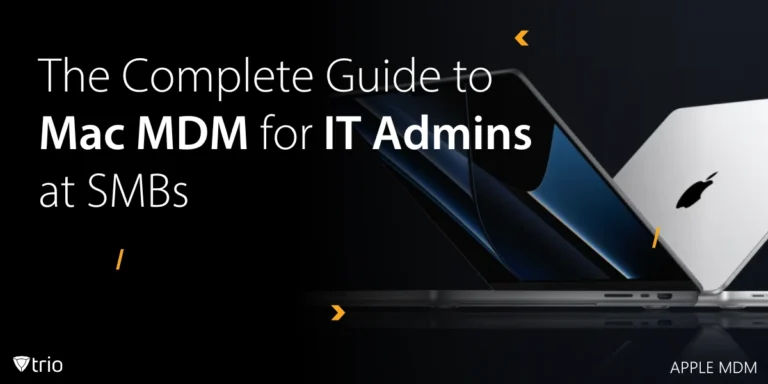As more and more sensitive information is stored and processed in the cloud, it is crucial to have a well-defined and comprehensive cloud security checklist in place. This policy serves as a blueprint for ensuring your cloud-based assets' confidentiality, integrity, and availability while promoting compliance with industry regulations and best practices. This article will delve into the intricacies of creating an effective cloud security policy template, equipping you with the knowledge and tools necessary to fortify your organization's cloud security posture.
We will explore the essential components, best practices, and strategic considerations that should be incorporated into your cloud security policy, empowering you to proactively mitigate risks and maintain secure cloud computing. Here, you can also find a free downloadable cloud security policy template, which you can customize to fit your organization’s needs.
Understanding the Importance of a Cloud Security Policy
By establishing clear guidelines, procedures, and responsibilities, a cloud security policy helps to:
Mitigate Risks: Cloud computing introduces new attack vectors and vulnerabilities that must be addressed proactively. A cloud security policy outlines measures to identify, assess, and mitigate potential risks, ensuring your organization remains vigilant against evolving cyber threats.
Ensure Compliance: Various industry regulations and standards, such as GDPR, HIPAA, and PCI-DSS, mandate specific security requirements for organizations handling sensitive data. A cloud security policy helps ensure compliance with these regulations, minimizing the risk of costly fines and reputational damage.
Foster Consistency: Implementing consistent security practices across your organization is crucial for maintaining a solid security posture. A cloud security policy provides a standardized approach to cloud security, ensuring that all stakeholders, from employees to third-party vendors, adhere to the same guidelines.
Protect Sensitive Data: With sensitive data, such as customer information, financial records, and intellectual property, often stored in the cloud, a robust cloud security policy is essential for safeguarding this critical information from unauthorized access, misuse, or theft.
Enhance Incident Response: In a security breach or incident, a well-defined cloud security policy can streamline the incident response process, minimizing the potential impact and facilitating a more efficient recovery.
Developing a Comprehensive Cloud Security Policy Template
To effectively address the multifaceted aspects of cloud security, your cloud security policy template should encompass a wide range of considerations and best practices. Here are the key components that should be included in your cloud security policy template:
-
Policy Overview and Scope
Begin your cloud security policy template by clearly defining the policy's purpose, scope, and objectives. This section should outline the specific cloud services, platforms, and environments covered by the policy, as well as the roles and responsibilities of various stakeholders, such as IT administrators, end-users, and third-party vendors.
Additionally, it is essential to establish the guiding principles and overall approach to cloud security that your organization will adopt. This could include adherence to industry standards, such as the NIST Cybersecurity Framework or the ISO 27001 Information Security Management System, and alignment with your organization's broader cybersecurity strategy.
-
Cloud Service Provider Selection and Risk Assessment
One of the critical aspects of cloud security is the selection and evaluation of cloud service providers (CSPs). Your cloud security policy template should outline the criteria and processes for assessing and selecting CSPs that meet your organization's security requirements.
-
Access Control and Identity Management
Effective access control and identity management are crucial components of a robust cloud security strategy. Your cloud security policy template should address the following aspects:
- User Access Management
- Authentication and Authorization
- Privileged Access Management
- Password Management
-
Data Protection and Encryption
Protecting sensitive data stored or processed in the cloud is critical to cloud security. Your cloud security policy template should address the following data protection measures:
- Data Classification
- Encryption Requirements
- Key Management
- Data Retention and Disposal
-
Incident Response and Business Continuity
Despite the best security measures, security incidents and breaches can still occur. Your cloud security policy template should include a comprehensive incident response plan and business continuity strategies to ensure your organization can effectively respond to and recover from such events.
-
Cloud Security Monitoring and Auditing
Continuous monitoring and auditing your cloud environment are essential for maintaining a strong security posture and identifying potential vulnerabilities or threats. Your cloud security policy template should address the following aspects:
- Security Monitoring and Logging
- Vulnerability Management
- Security Auditing and Compliance
- Third-Party Risk Management
-
Cloud Security Awareness and Training
Effective cloud security relies not only on technical controls but also on the awareness and preparedness of your organization's personnel. Your cloud security policy template should include provisions for ongoing security awareness and training programs.
-
Cloud Security Governance and Compliance
Effective cloud security governance and compliance ensure that your organization adheres to relevant regulations, industry standards, and best practices. Your cloud security policy template should address the following aspects:
- Regulatory Compliance
- Security Governance Framework
- Risk Management
- Security Policies and Procedures
- Security Performance Monitoring and Reporting
-
Cloud Security Architecture and Design
Your cloud security policy template should also address the critical architectural and design considerations for building a secure and resilient cloud environment. This section should cover the following aspects:
- Secure Cloud Architecture
- Secure Application Design
- Data Protection by Design
- Secure Infrastructure Deployment
- Security Testing and Validation
-
Third-Party and Supply Chain Risk Management
Organizations often rely on third-party vendors, partners, and service providers to support their cloud operations in today's interconnected world. Your cloud security policy template should address the risks associated with these third-party relationships and supply chain dependencies.
-
Cloud Security Operations and Maintenance
Maintaining a secure and resilient cloud environment requires ongoing operational and maintenance activities. Your cloud security policy template should address the following aspects:
- Patch Management and Vulnerability Remediation
- Configuration Management
- Security Monitoring and Incident Response
- Security Testing and Validation
- Backup and Recovery
- Change Management
-
Cloud Security Policy Review and Continuous Improvement
As technology and security landscapes evolve, it is essential to regularly review and update your cloud security policy to ensure its continued relevance and effectiveness. Your cloud security policy template should include provisions for ongoing policy review and continuous improvement.
Free Downloadable and Customizable Cloud Security Policy Template
We are pleased to offer a comprehensive cloud security policy template you can download for free. This template is meticulously crafted to help your organization establish robust security measures tailored to the unique demands of cloud computing environments. With a focus on flexibility, our template allows you to easily customize various sections to align with your specific organizational requirements and security protocols.
Utilizing our cloud security policy template will save valuable time and resources while ensuring your cloud infrastructure is well-protected. The template includes essential guidelines, roles and responsibilities, and best practices that adhere to the latest industry standards. Download it now and take the first step towards fortifying your cloud security strategy with the confidence that your data and operations are safeguarded against evolving threats.
The Role of Mobile Device Management (MDM) in Cloud Security
In today's mobile-centric world, where employees often access cloud-based applications and services from various devices, including smartphones, tablets, and laptops, mobile device management (MDM) plays a crucial role in ensuring the security of your cloud environment.
MDM solutions provide organizations with a centralized platform to manage and secure mobile devices, enabling them to enforce security policies, maintain device compliance, and protect sensitive data accessed or stored on these devices.
Introducing Trio: A Comprehensive MDM Solution for Cloud Security
At Trio, we understand the critical importance of mobile device management in ensuring the security of your cloud environment. Our comprehensive MDM solution, Trio, is designed to provide organizations with a powerful and user-friendly platform for managing and securing mobile devices, empowering you to take control of your cloud security posture.
We are committed to empowering organizations with the tools and expertise to maintain a secure and compliant cloud environment. By leveraging our comprehensive MDM solution, you can extend your cloud security strategy to mobile devices, mitigating risks and protecting sensitive data and applications.
To experience the power of Trio and take your cloud security to the next level, we invite you to visit https://www.trio.so/start/ and request a free trial today.
Conclusion
As businesses increasingly rely on cloud services to streamline operations, enhance collaboration, and reduce IT infrastructure costs, robust cloud security measures have become more pressing than ever. A well-crafted cloud security policy is foundational to your organization's overall cybersecurity strategy, providing a comprehensive framework for protecting your cloud-based assets and data.
By incorporating MDM into your cloud security strategy, you can extend your security controls and policies to mobile devices, mitigating the risks associated with mobile access to your cloud-based applications and data and maintaining a comprehensive and cohesive security posture across your entire IT infrastructure. With Trio as your trusted MDM partner, you can confidently embrace the benefits of cloud computing while ensuring the highest levels of security and compliance.
Get Ahead of the Curve
Every organization today needs a solution to automate time-consuming tasks and strengthen security.
Without the right tools, manual processes drain resources and leave gaps in protection. Trio MDM is designed to solve this problem, automating key tasks, boosting security, and ensuring compliance with ease.
Don't let inefficiencies hold you back. Learn how Trio MDM can revolutionize your IT operations or request a free trial today!
![[Free] Cloud Security Policy Template + Best Practices](https://www.trio.so/blog/wp-content/uploads/2024/07/Free-Cloud-Security-Policy-Template.webp)




